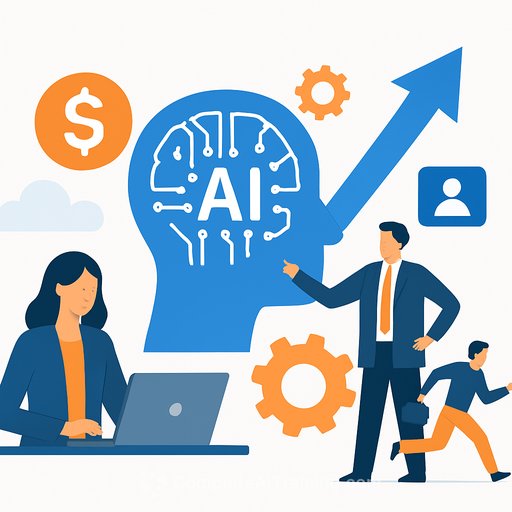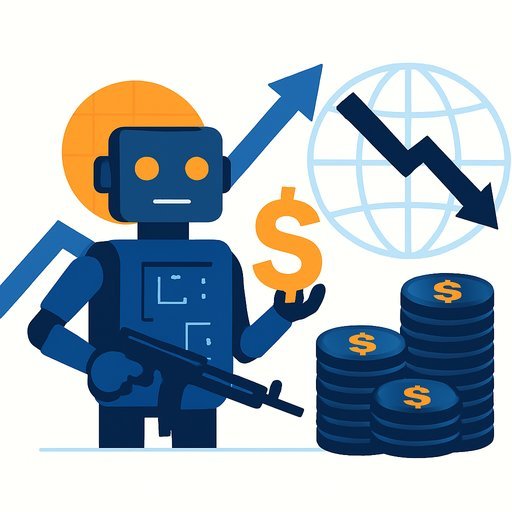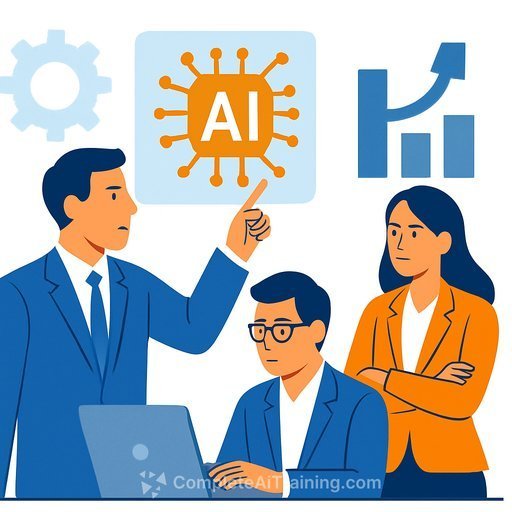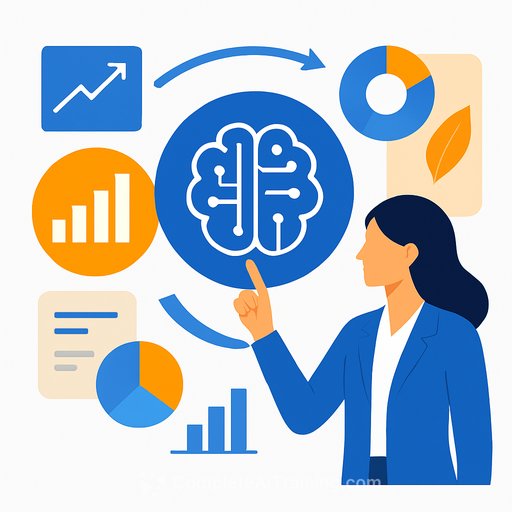External Talent Is Now a Core Capability
Digital transformation is moving faster than internal headcount can keep up. External workers-once deployed to trim budgets-now provide agility, innovation, and specialized expertise that help companies win in an AI-driven economy.
The shift is already visible in the numbers: external talent makes up about 20% of the workforce in the UK and 40% in the U.S., with projections reaching 50% globally by 2050. This isn't a side bet. It's a strategic lever.
From Cost to Capability: What the Data Shows
A global study sponsored by SAP and conducted by Economist Impact, "From Cost to Capability: Redefining External Workforce Strategy in 2025," captures the pivot. In 2023, nearly a third of organizations prioritized risk reduction as the main reason to use contingent labor and service providers. By 2025, that dropped to 6%.
Today, cost efficiency (74%) and access to specialized skills (62%) lead the agenda. As the report notes, "To mitigate risk, businesses need to reduce fixed costs, and labor is often a high fixed cost that needs to be seen as a source of growth." Leaders are applying external talent to project-based and technology-driven work-AI, automation, and data science in particular. Looking ahead, 64% of executives plan to expand their talent networks within three to five years (up from 54% last year).
Build a Holistic Talent Ecosystem
The new model treats the workforce like a dynamic supply chain. HR, finance, and procurement work from one plan to forecast demand, close skills gaps, and blend internal and external teams without friction.
This direction echoes earlier Economist Impact findings: procurement has moved from price taker to orchestrator of risk, sustainability, and innovation. "Total talent management" brings people, platforms, and partners under one roof-and connects culture and communication across all teams.
The prerequisite: real-time visibility. Digital tools must break down silos, map skills to demand, and ensure external workers feel connected to goals, not just contracts.
Procurement at the Center of Workforce Transformation
Procurement is stepping into a broader role-governance, collaboration, and ecosystem design-not just sourcing and compliance. That expansion comes with pressure: confidence in procurement's workforce management skills slipped from 51% in 2024 to 43% in 2025.
CFOs and COOs are more involved, tying external workforce oversight to financial health, compliance, and ESG outcomes. Success now depends on unified workforce data, tighter digital integration, and clear alignment with enterprise strategy. Platforms that consolidate contracts, spend, and skills mapping will let teams balance cost optimization with agility and control.
AI Raises the Bar on Agility and Accountability
AI is changing how organizations plan, source, and manage external talent. According to the study, 68% of procurement leaders cite AI proficiency and ethics as their top development priority over the next 18 months.
Use cases are clear: forecasting workforce needs, automating sourcing, and closing gaps in areas like agentic AI and automation. The harder part is accountability. Who benefits from efficiency gains? How are productivity improvements measured? New cost models and shared ownership across functions are required.
Executive Moves for the Next 90 Days
- Stand up a cross-functional talent council (HR, finance, procurement, IT) with a single backlog for critical skills and projects.
- Create a skills taxonomy and map it to current and upcoming initiatives. Identify the 10 highest-impact gaps that external talent can fill.
- Consolidate your external workforce data (contracts, rates, performance, skills) into one system of record. Eliminate shadow workflows.
- Pilot AI-assisted sourcing for two roles with high churn or scarce skills. Set guardrails for data, ethics, and supplier transparency.
- Shift two major engagements to outcome-based contracts with clear deliverables, acceptance criteria, and incentives.
- Define a simple governance model: who approves, who measures value, how results flow into quarterly business reviews.
Metrics That Matter in 2025
- External spend under management (% and trend)
- Time-to-fill for critical roles (internal vs. external)
- Skills coverage ratio (demand vs. supply across priority capabilities)
- Outcome attainment rate (deliverables accepted on time/in scope)
- Quality per dollar (supplier performance vs. rate benchmarks)
- Compliance hit rate (background, certifications, data handling)
- AI impact delta (cycle time reduction, accuracy, and cost-to-serve)
The External Workforce of the Future
Agility, capability, and collaboration define competitive advantage. Organizations that treat external talent as a strategic asset-supported by shared governance, unified data, and a cohesive culture-will outpace those that treat it as a transactional expense.
Many firms are standardizing on enterprise platforms such as SAP Fieldglass and SAP Ariba to connect procurement and external workforce management. The goal is simple: clarity on who is doing what work, at what cost, to deliver which outcomes-then improving that loop quarter after quarter.
Resources
This is the strategy moment for external talent. Treat it like core infrastructure, measure it like a product, and staff it like a portfolio you expect to outperform.
Your membership also unlocks:






